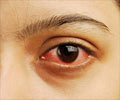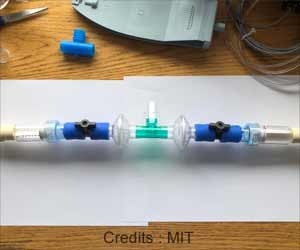Experts have simple and easy steps that a person should follow to protect one’s ears, eyes and hands from the pyrotechnic hoopla and COVID-19 that could make July 4, 2020 one of the most challenging national birthdays ever.

‘The American Speech-Language-Hearing Association (ASHA) recommends viewing fireworks from no closer than 500 feet to protect hearing. If you are viewing from less than 500 feet, hearing protection should be worn.’





In addition to lighting up the night sky, the loud popping sounds generated by fireworks can contribute to noise induced hearing loss, the second most common type of inner ear hearing loss after age-related hearing loss. Noise induced hearing loss usually develops gradually and slowly over time and can begin at any age. It is generally caused by moderate to prolonged exposure to noise levels above 85 decibels, though some people can be affected with only momentary exposure to such sounds. Leigh Ann Reel, Au.D., Ph.D., CCC-A, director of the TTUHSC Center for Speech, Language, and Hearing Research, said that’s an important threshold to remember because the noise from fireworks can reach 140 to 160 decibels, louder than that of a jet engine. To reduce the chances of noise induced hearing loss from fireworks, Reel provided the following reminders and tips:
• Infants should not be exposed to noise from fireworks. Sound, when presented in a smaller space, is amplified, which means a loud sound like that produced by fireworks may be more dangerous to an infant’s little ear canals and put them at higher risk than adolescents or adults who have larger ear canals.
• There are different hearing protection options available for both children and adults. Foam earplugs are the least expensive option and can be very effective when used properly. They are disposable, meant to be used one time and are generally made to fit adolescents and adults.
• Protective earmuffs are more expensive than disposable foam earplugs and offer good hearing protection that is difficult to use incorrectly. They come in different sizes for children and adults, and appropriately sized protective earmuffs are available if exposing an infant to loud noises like fireworks is unavoidable.
Advertisement
• It is recommended that people that will be close to the fireworks, and especially those igniting them, wear both earplugs and earmuffs for extra protection.
Advertisement
According to the Consumer Product Safety Commission, 19% of the more than 9,000 fireworks-related injuries in 2018 were to the eyes. Kelly Mitchell, MD, a professor in the TTUHSC Department of Ophthalmology and Visual Sciences, said approximately 30% of those eye injuries were to children, and that all of those affected, regardless of age can suffer a significant eye injury to one or both eyes, permanent decrease in visual acuity, even complete vision loss or the loss of an eye. To protect the eyes and promote overall safety during the use of fireworks here are Dr. Mitchell recommends:
• Careful planning beforehand:
o Anyone igniting fireworks should wear safety goggles and appropriate gloves to prevent injury and burns to the hands.
o Strict adult supervision
o If adolescents are going to be allowed to light fireworks strongly consider limiting to those that are old and mature enough to have a drivers license. Younger children should only be allowed to watch fireworks.
o Pick a safe place to light the fireworks that is a safe distance away from people. This will depend on the type of fireworks. The larger and more powerful types need a larger safe zone. Have available water supply. Fireworks should not be discharged next to a pile of other fireworks or near woodpiles, flammable liquids, houses or vehicles. The area should not be accessible to young children.
o Pick a specific time when fireworks will be lighted/enjoyed. Afterwards all unused fireworks are either soaked in water and discarded or secured in a cool, dry location.
o Having all participants, even those watching, use safety glasses for protection. Most local home improvement stores stock good quality glasses which can be purchased for as little as $10. Many online sources for safety glasses are also available. Make sure that they are appropriately sized for adults and children. Safety glasses can also protect the eyes from sooty material that can be carried by the smoke fireworks produce.
• Although sparklers often are considered the safest fireworks for children, adults should carefully supervise their use and provide eye protection and gloves. Sparklers typically reach temperatures between 1800 and 3000º F, ten times hotter than boiling water, hot enough to instantaneously cause severe burns to the eyes, face, and hands.
• If someone does suffer an injury to the eye, resist any temptation to try and remove material from the eyelid or the eye surface and calmly help get them to an emergency room where they can be evaluated and treated.
Video interview available: KELLY MITCHELL, M.D. INTERVIEW - EYE SAFETY PARTY LIKE IT’S COVID-19
As people have adapted to life in a COVID-19 world, many communities have began opening up businesses and venues to larger gatherings. Despite the easing of restrictions, Richard Lampe, M.D., professor and chair for the TTUHSC Department of Pediatrics, said it’s still important to remain cautious because the virus has not disappeared. For those planning to celebrate the Fourth of July with family members or other groups of people, Lampe suggested observing some of the same precautions that have become so familiar over the last several months:
• If traveling, be aware of, and comply with the restrictions that apply to your destination and remember that restrictions can vary from state to state and between counties, cities and towns within the same state.
• Masks may not be necessary in open spaces like parks, but they should still be used for activities like shopping, especially at the grocery store where common cookout items like beverages, buns and hotdogs are sold. This may also include the local fireworks stand and large community fireworks shows.
• Remember that proper hand washing prevents the spread of many unwanted germs, including the COVID-19 virus. Because most summer cookouts include a buffet-style serving line, those organizing such gatherings can take steps to reduce the chances that family and friends may be exposed to mishandled food. These steps include placing hand wipes or hand sanitizer between each tray of food and providing disposable plates and utensils for those who want to make a second trip through the line.
• Continue to practice social distancing, especially at indoor gatherings. When attending an outdoor event like a community fireworks shows, set your group up on a blanket a safe distance away from other people to reduce the possibility of virus spread by excited yelling or screaming.
• People who are sick or don’t feel well should avoid contact with others. It may mean missing out on a holiday cookout or fireworks show but it also will protect the health of others.
Source-Newswise










